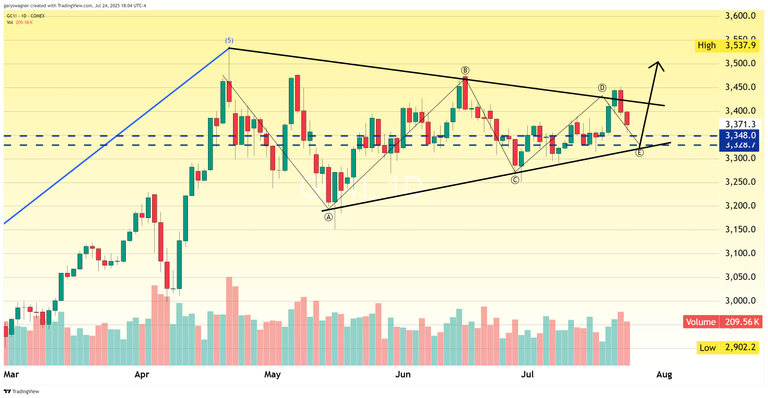Gold extended its decline for a second consecutive session as markets responded positively to emerging prospects for a trade agreement between the United States and European Union. The precious metal's retreat reflects broader investor sentiment shifting toward risk assets amid hopes for reduced trade tensions.
The European Union appears to be progressing toward a comprehensive trade accord with Washington that would establish a 15% tariff regime on EU goods entering American markets. This development represents a significant diplomatic achievement, as it would effectively circumvent the more punitive 30% levy originally scheduled to take effect on August 1. The proposed framework mirrors the structure of the existing US-Japan trade agreement and would encompass a broad range of products, potentially including automotive exports.
Despite these encouraging developments, market participants remain cautiously positioned as the August 1 deadline approaches rapidly. The looming possibility of substantial tariffs being imposed on numerous trading partners who have yet to finalize agreements with the United States continues to generate uncertainty across global markets. This apprehension is particularly acute given the significant economic implications such measures could have on international trade flows.
Adding to the complex trade landscape, investors are closely monitoring developments regarding US-China relations. Treasury Secretary Scott Bessent is scheduled to engage with Chinese officials in the coming week, meetings that could provide crucial clarity on the trajectory of the world's two largest economies' trade relationship. The outcome of these discussions will likely have far-reaching implications for global commodity markets, including precious metals.
In today's trading session, gold futures on the Comex exchange surrendered $24.10, representing a 0.71% decline, to settle at $3,373.50 per ounce. The metal recovered substantially from intraday lows of $3,344.20, suggesting some underlying support despite the overall bearish sentiment. Silver experienced a parallel decline, falling $0.28 or 0.71% to close at $39.22 per ounce, after touching session lows of $38.93.

The precious metals' weakness was amplified by notable strength in the US dollar, which advanced 0.30% to reach 97.50 on the dollar index. This currency appreciation typically pressures gold and silver prices, as it makes dollar-denominated commodities more expensive for holders of other currencies, thereby reducing international demand.
The current market dynamics illustrate the delicate balance between geopolitical developments and precious metals valuations, with trade policy remaining a critical driver of investor sentiment in the near term.
For those that would like more information about our services click here
Wishing you as always good trading,

